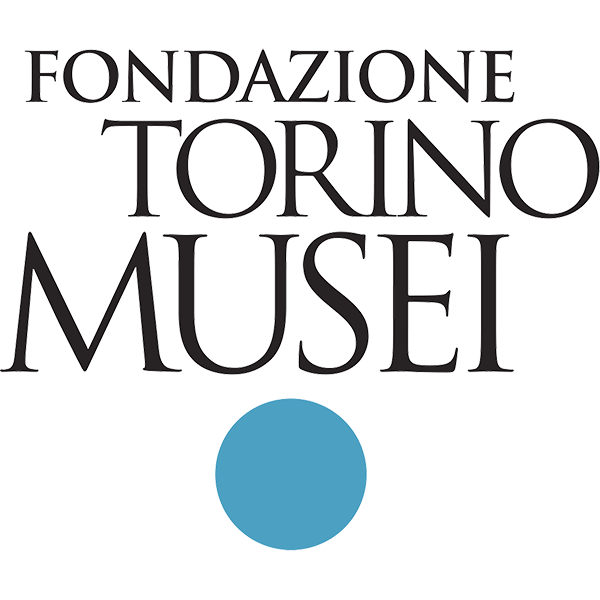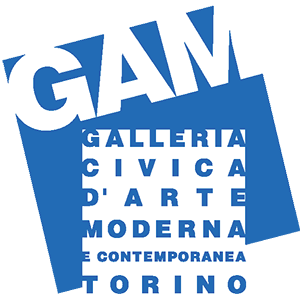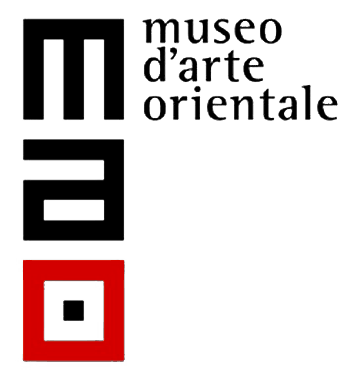The Great Void
- Exhibition
- 6 May 2022 - 4 September 2022

Curated by Davide Quadrio
From an idea of Claudia Ramasso
The concept of emptiness, of vacuity, is central to Buddhist doctrine: emptiness is not only the instant that precedes the birth of all things, but it is also the final emptiness, the liberation of all sentient beings at a cosmic level. Contrary to what happens in the European cultural and philosophical traditions, where the term "emptiness" carries with it a negative connotation that brings it close to nihilistic ideas and to lack or deprivation, for Buddhism emptiness has a positive connotation ultimately linked to the achievement of awareness, that is the understanding that life, with its continuous changes, is impermanence and interdependence, since everything exists only in relation to the other. Understanding this, and therefore freeing oneself from the suffering of life, is resolved in a dimension of absolute peace (nirvana): it is here that the essence of Buddha is revealed, who is not divinity, but precisely Emptiness.
The exhibition The Great Void. From Sound to Image which opens at the MAO on May 6, is dedicated precisely to these concepts: the exhibition aims to offer the public a particularly engaging multisensory experience and is also a strong sign of hope for a future that is uncertain and discouraging.
The exhibition opens with a large empty space. It is not an empty space, however, but a space that is gradually saturated with the presence of the notes of the young, award-winning Rome based composer Vittorio Montalti, who has composed the piece "The great Void" for the exhibition.
Visitors are invited by the music to take an experiential and meditative path, to reach the fulcrum of the exhibition, in the Sala Colonne: there, in fact, is exhibited a very rare Tibetan thangka of the fifteenth century, the most precious of the MAO collections, which portrays Maitreya, the Buddha of the Future depicted in splendid robes and seated on the throne of lions. With his hands poised in the dharmacakramudra (the gesture of setting in motion the Wheel of Law), which reveals his future mission as promulgator of the Doctrine, the Buddha holds the stems of plants and flowers, germinal symbols of a future liberation.
As a religious and ritual object, the thangka, with its innumerable symbologies, is a medium that allows the viewer to navigate through the difficult waters of meditation and visualize the various attributes of the deity depicted (in this case Maitreya, the Buddha of the future) and to enter a deep meditative state, in which the images, colors, gestures, and sounds depicted in the painting are revealed in a sublime ritual cosmogony.
The ancient Tibetan thangka is inserted here as the first image, dense and deep, that reveals itself to the spectator after an important sonic and spatial journey. Observing this sacred image after a journey that "cleanses" the gaze and the ear through Montalti's sounds will therefore be a transcendent experience: a suspended image, in a white noise of sound, a vibrant cosmic rustle, which opens up to a multitude of forms and colors and gestures.
This first painting brings with it the strength of the Tibetan tradition of reproducing Buddhist deities and saints on canvas (the thangka) and that, in modern times, lies at the origin of the photographic portrait of the tulku, to which the final part of the exhibition is dedicated.
In the last two rooms are in fact hundreds of photographs of tulkus, part of a collection of images made from the late nineteenth century to the present day that portray the living Buddhas belonging to the Buddhist schools and bonpo in all areas of the world where Tibetan Buddhism is practiced, redeeming figures whose "mind of wisdom" is reborn in new bodies to lead humanity towards salvation and the Great Void ... Buddhism.
In this sense, these are not mere photographic portraits, but authentic objects of veneration, containing the sacredness of presence: in fact, it is believed that the image has the same power as the tulku itself, or more precisely, that the image and the tulku are inseparable.
This collection, begun over a decade ago by the artist Paola Pivi, has now reached thousands of images and constitutes the largest archive of tulku images in the world (http://tulkus1880to2018.net/).
On May 6, the opening day of the exhibition, in Salone Mazzonis artist Marcos Lutyens will lead “Blue Lion Induction”, a meditation that will take visitors through a hypnotic journey beyond words. Marcos Lutyens is an artist and hypnotist and his performances are sessions of collective hypnosis, which lead visitors first into a profound meditative state and then into an imaginary world, where the indications of his voice are integrated with memories, expectations, dreams. The hypnotic induction at the MAO is conducted in the presence of a Manjusri sculpture, the bodhisattva associated with prajna (wisdom) in Mahayana Buddhism. Music, scent and the intent to tame the mind through evocative words accompany the visitor on a journey towards a universal vision in the continuity of infinity.
On the occasion of the Eurovision Song Contest, on May 13 and 15, Vittorio Montalti and pianist Gloria Campaner will give a world premiere performance of the musical composition “The Great Void”. The performances will be recorded live and will be broadcasted at the entrance of the museum as a sound installation for the duration of the exhibition.
During the performances, Gloria Campaner will wear a sculpture created by the artist Maurizio Anzeri.
On May 28 films The Reincarnation of Khensur Rinpoche and The Thread of Karma, by Tibetan directors Ritu Sarin and Tenzing Sonam, will be screened, while Some Questions on the Nature of Your Existence will be shown for the duration of the exhibition.
From June 21 to 24, artist Chrysanne Stathacos will be a guest of the museum and will create a mandala of mirrors and roses with the performance "Blowing roses."
Vittorio Montalti | Silver Lion at Venice Biennale 2010 and "Una Vita nella Musica" Award 2016 by Gran Teatro La Fenice. His works have been performed at various festivals such as New York Philharmonic, Carnegie Hall, IRCAM-Centre Pompidou, Gran Teatro La Fenice, Maggio Musicale Fiorentino, Teatro dell’Opera di Roma, La Biennale di Venezia, Roma Europa Festival and many others. He has been composer in residence at: Italian Cultural Institute in Paris, American Academy in Rome - Marcello Lotti Italian Fellowship, Civitella Ranieri Foundation, FortissimissimoFirenzeFestival - Amici della Musica di Firenze, Divertimento Ensemble, La Società dei Concerti di Milano. Particularly interested in music theater, he has written four operas on librettos by Giuliano Compagno that have been staged in different productions. He teaches composition at the Conservatory “Carlo Gesualdo da Venosa” of Potenza. His music is published by Edizioni Suvini Zerboni and since 2018 by Casa Ricordi.
Gloria Campaner | Born in Venice in 1986, Gloria Campaner started playing the piano when she was 4 years old and since then she has never stopped, winning the podium of some of the most prestigious competitions in Europe and America and playing on the main stages such as Parco della Musica in Rome, Carnegie Hall in New York, Kioi Hall in Tokyo and the Arena of Verona. Considered one of the most versatile and transversal musicians of her generation, she has recorded for RAI, BBC, Sky, RSI and for the EMI and Warner Classics labels. In addition to her concert work, she is committed to the dissemination of classical music across geographical, cultural and social boundaries. Developing his holistic vision of art he founded the creative laboratory "C# See Sharp" to help young talents to know and manage their emotional sphere. He regularly teaches courses, seminars and workshops at universities and academies around the world.
Maurizio Anzeri | Anzeri studied sculpture and graphic design at University of the Arts London, and received his MFA from The Slade School of Fine Art, London. His work has been exhibited in shows at the V&A London, The MET NewYork, Baltic Centre for Contemporary Art, UK; CHAPTER Arts Centre Cardiff, UK; Pier24 Photography San Francisco and other locations in New York, Milan, San Francisco, Berlin and London. Notable exhibitions include: OVERDOSE, The DMH Design Museum Holon, Israel (2022); Known and Strange at the V&A London (2021); Alexander McQueen Savage Beauty, The MET 2011 and the V&A 2015; Self Service at Dallas Contemporary, TX (2019); Iconoclasts: Art Out of the Mainstream, Saatchi Gallery, London, UK (2017); The King and I, Shanghai Gallery of Art, China (2016). He collaborated with Alexander McQueen and Isabella Blow. His work is held in collections including the Victoria and Albert Museum, London, UK; The Pilara Foundation Collection, Pier 24 Photography, San Francisco, CA; Museo Cantonale, Lugano, Switzerland; Museum Kunstpalast, Dusseldorf, Germany; and the Saatchi, Gagosian, and Rothschild collections.
The Great Void exhibition is complemented by a rich musical program curated by Davide Quadrio, Chiara Lee & Freddie Murphy.
Impressionistic soundscapes, acoustic meditations, tradition and innovation... The contemporary sound space of Yeong Die, Li Yilei, Amosphère, Hatis Noit and KyoShinDo confronts and reflects on transience, repetition as transformation, the relationship between a part and its whole, the intersection between absence and presence. Declined in different ways, the sound represents each time a new beginning, the confirmation of a wholeness that fills, an emptiness that welcomes.
More information HERE
ADMISSION FEE
Full ticket 7€
Reduced ticket 6€ (with Eurovision tickets from May 10 to 22, with The Phair ticket from May 27 to 29, with Salone del Libro tickets from May 19 to 23)






